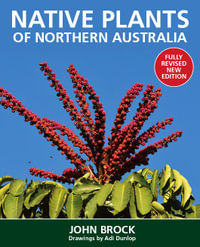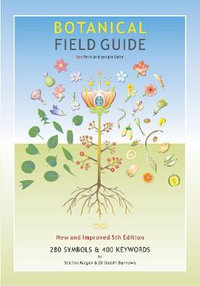| Preface and Acknowledgments | p. v |
| Contributors | p. xxi |
| Timber Assessments Supporting the Development of National Forestry Programs and Policy | p. 1 |
| The Challenge of Developing Models to Support Forest Sector Policy Analysis | p. 3 |
| Introduction | p. 3 |
| Shaping the Assessment System | p. 6 |
| Past studies, methods, and policy context | p. 6 |
| Requirements of the RPA legislation | p. 10 |
| Characteristics of the US forest sector | p. 11 |
| Changing management paradigms on public and private lands | p. 14 |
| General Model Attributes | p. 15 |
| Methodological Considerations in Developing the Timber Assessment Projection System | p. 19 |
| Introduction | p. 19 |
| Approaches to Forest Policy Planning and Analysis | p. 21 |
| Overview of the Assessment System | p. 24 |
| RPA legislation, past analytical traditions, and model structure | p. 25 |
| Outline of the Assessment System | p. 29 |
| Some General Considerations in Forest Sector Model Development | p. 31 |
| Static or dynamic models | p. 32 |
| Number of market levels | p. 39 |
| Resource detail | p. 42 |
| Form and extent of spatial detail | p. 43 |
| Exogenous or endogenous land base | p. 45 |
| Exogenous or endogenous forest management investment | p. 47 |
| Model Components | p. 53 |
| Solid Wood-Timber Assessment Market Model (TAMM) | p. 55 |
| Introduction | p. 55 |
| General TAMM Structure | p. 56 |
| Models of Solid Wood Market Components | p. 57 |
| Demand for softwood lumber, softwood plywood, and OSB | p. 57 |
| Demand for hardwood lumber | p. 63 |
| Product supply relations and capacity adjustment | p. 64 |
| Demand for logs and stumpage | p. 71 |
| Sawtimber stumpage supply | p. 71 |
| Nonstructural panels | p. 77 |
| Transport costs | p. 78 |
| Model Solution | p. 79 |
| Market equilibrium | p. 79 |
| Links to other model elements | p. 82 |
| Review of Approaches to Modeling the Solid Wood Sector | p. 85 |
| Short-term models versus long-term models | p. 86 |
| Specification of demand | p. 88 |
| Supply-side specification, log demand, and capital stock | p. 89 |
| Spatial structure and trade | p. 91 |
| Sawtimber supply | p. 92 |
| North American Pulp & Paper Model (NAPAP) | p. 99 |
| Introduction | p. 99 |
| Historical context | p. 100 |
| NAPAP Model-Origins and Objectives | p. 103 |
| Background | p. 104 |
| Specifications | p. 105 |
| FPL pulpwood model | p. 106 |
| NAPAP model | p. 108 |
| Other Models and Related Literature | p. 108 |
| Contemporaneous forest sector models | p. 110 |
| Spatial equilibrium modeling | p. 111 |
| Price-endogenous linear programming | p. 112 |
| Techno-spatial equilibrium modeling | p. 113 |
| Mathematical Structure of NAPAP Model | p. 114 |
| Objective function | p. 114 |
| Demand | p. 115 |
| Supply | p. 120 |
| Material balance constraints and prices | p. 129 |
| Manufacturing capacity constraints | p. 130 |
| Net manufacturing costs and input/output coefficients | p. 130 |
| Recursive relationships | p. 162 |
| Selected outputs | p. 165 |
| Conclusions | p. 169 |
| Methods for Projecting Areas of Private Timberland and Forest Cover Types | p. 175 |
| Introduction | p. 176 |
| History and Scope of Large-Scale Forest Area-Change Projections | p. 176 |
| Structure of Land-Use and Land-Cover Modeling | p. 182 |
| Land-Use Modeling | p. 184 |
| Land-use theory | p. 184 |
| Land-use model estimation | p. 188 |
| Examples of regional models | p. 195 |
| Projecting Land-Use Changes | p. 200 |
| Projections of exogenous variables | p. 200 |
| Projection methods for land uses | p. 201 |
| Land-Cover Modeling | p. 203 |
| Type transition theory | p. 204 |
| Type transition model estimation | p. 205 |
| Model Validation | p. 210 |
| Summary | p. 215 |
| Land Use Data | p. 223 |
| Timber Inventory and Management-ATLAS | p. 229 |
| Introduction | p. 229 |
| ATLAS Structure and Linkage to Other Assessment System Elements | p. 230 |
| Inventory strata and inventory data | p. 232 |
| Growing stock removals and harvest requests | p. 235 |
| Timberland area and forest type change | p. 236 |
| Management intensity | p. 237 |
| Modeling forest growth | p. 240 |
| Modeling yields under different harvesting methods/silvicultural regimes | p. 247 |
| Management Investment | p. 251 |
| Other Approaches to Inventory Projection | p. 256 |
| Exogenous Assumptions-Framing the Base Case and Scenarios | p. 265 |
| Introduction | p. 265 |
| Exogenous Variables in the Assessment System | p. 268 |
| Macroeconomic activity | p. 273 |
| International trade in forest products | p. 278 |
| Timber supply from public lands | p. 283 |
| Adjustments for sources of harvests and removals | p. 284 |
| Model Solution, Validation, and Control | p. 289 |
| Introduction | p. 289 |
| Linking Model Components and Model Solutions | p. 290 |
| Model Validation | p. 294 |
| Validation considerations for individual components | p. 296 |
| In-sample forecast error measures in the full projection system | p. 297 |
| Model Control | p. 302 |
| Capacity adjustment | p. 303 |
| Private stumpage supply behavior | p. 303 |
| The Gauss-Seidel Method for Iterative Solution of Systems of Equations | p. 306 |
| Projections and Scenarios | p. 319 |
| Base Case Projection | p. 321 |
| Introduction | p. 321 |
| Land Base and Cover Type Changes | p. 322 |
| Timber Resource Trends | p. 327 |
| Softwoods | p. 332 |
| Hardwoods | p. 336 |
| Forest Products Markets | p. 337 |
| Softwood harvest | p. 338 |
| Hardwood harvest | p. 344 |
| Prices | p. 345 |
| Canadian Production and Harvest | p. 347 |
| Evolving Views of the Future of the US Forest Sector | p. 353 |
| Introduction | p. 354 |
| Visions of 2000 | p. 359 |
| The Uncertain Nature of Assumptions | p. 361 |
| Population | p. 361 |
| National forest timber harvest | p. 362 |
| Trade assumptions | p. 363 |
| Housing Starts | p. 364 |
| How Have our Views of the Future Changed Over the Last 50 Years? | p. 365 |
| Lumber and plywood production | p. 365 |
| Timber harvest | p. 368 |
| Improving the Treatment of Prices | p. 371 |
| Stumpage price projections | p. 376 |
| Closing | p. 379 |
| The Impact of Public Harvest in the USA on North American Timber and Product Markets | p. 381 |
| Introduction | p. 381 |
| Structure of Public Timber Sales Programs | p. 383 |
| A Counterfactual Simulation for Western Harvest, 1990-1996 | p. 385 |
| Simulated Market Impacts of Thinning on Western Public Lands | p. 388 |
| Discussion | p. 394 |
| Public Harvest Policy and the Assessment System | p. 395 |
| The Role of Private Management Investment in Long-Term Supply | p. 399 |
| Introduction | p. 399 |
| Historical Trends and Behavior in Private Management Investment in the USA | p. 400 |
| Private Management Investment in the Timber Assessment Projection System | p. 405 |
| Alternative Modeling Approaches | p. 406 |
| Scenarios of Future Management Investment | p. 410 |
| National fixed management intensity and cover type scenario | p. 410 |
| Constant Southern pine plantations scenario | p. 411 |
| Simulation results | p. 411 |
| Discussion | p. 417 |
| Globalization and World Trade | p. 419 |
| Introduction | p. 419 |
| Importance of Globalization and Trade | p. 421 |
| Two RPA Timber Assessment Case Studies | p. 426 |
| Comparison of GFPM to the Timber Assessment Projection System | p. 431 |
| RPA Timber Assessment in GFPM Context | p. 433 |
| Effects of Exchange Rates in GFPM | p. 441 |
| Conclusions and Planned Applications of GFPM | p. 443 |
| The Impacts of Climate Change on Forestry | p. 449 |
| Introduction | p. 449 |
| The RPA-Forest Service Policy Analysis | p. 450 |
| Climate change analyses within the RPA Resource Assessments | p. 451 |
| Enhancing the Timber Policy Modeling Framework for Climate Change Analyses in the 1980s | p. 452 |
| Modeling forest growth and yield in the forest sector model | p. 452 |
| Modeling the ecological dynamics of forests | p. 454 |
| Linking climate scenarios to ecological models and forest sector models: a modeling framework | p. 455 |
| Projecting Climate Change, Ecological Impacts, and Forest Sector Impacts: The Static Analysis in the 1993 RPA Timber Assessment | p. 457 |
| Climate change impacts on forest productivity | p. 458 |
| Forest sector impacts as modeled by TEM-Timber Assessment Projection System | p. 460 |
| Projecting Climate Change, Ecological Impacts, and Forest Sector Impacts: The Transient Analysis in the 2005 RPA Timber Assessment | p. 466 |
| Ecological response | p. 467 |
| Results of TEM-Timber Assessment Projection System analyses | p. 468 |
| Forest Sector Market Models with Intertemporal Optimization | p. 469 |
| FASOM | p. 469 |
| Ecological models incorporating species distributional shifts | p. 470 |
| Analysis of large-scale forest diebacks and the forest sector response | p. 471 |
| Global Trade and Climate Change Impacts | p. 474 |
| Global trade and shifts in vegetation carbon | p. 476 |
| Future price insight and climate change responses in the forest sector | p. 478 |
| Climate Scenarios and Ecological Models: Future Directions | p. 479 |
| Ecological effects of climate change on forests | p. 481 |
| Land-use modeling and climate change | p. 482 |
| Incorporating uncertainty into the analyses | p. 483 |
| Conclusions | p. 484 |
| Projecting Technological Change | p. 489 |
| Introduction | p. 489 |
| Techniques for projecting technological change | p. 490 |
| Technological Change in Sawtimber Harvesting | p. 493 |
| Technological Change in Producing Softwood Lumber | p. 495 |
| Technological Change in Producing Softwood Plywood | p. 497 |
| Technological Change in Producing OSB | p. 501 |
| Technological Change in Making Pulp, Paper, and Paperboard | p. 502 |
| Technology Change in Use of Solid-Wood Products in Major End Uses | p. 505 |
| Impacts of Accelerated Softwood Lumber Recovery Improvements | p. 506 |
| Conclusions | p. 508 |
| Long-Term Views of the US Land Base | p. 513 |
| Introduction | p. 514 |
| Base Case Summary | p. 514 |
| Land base and cover type changes | p. 515 |
| Examples of Alternative Land-Use Projections | p. 522 |
| Land-use and forest-cover scenarios | p. 523 |
| Land-Use and Land-Cover Dynamics: Influences of Natural and Human Factors in Alternative Futures | p. 528 |
| Summary and Conclusions | p. 536 |
| Lessons Learned from 25 Years of Forest Sector Modeling | p. 543 |
| The Utility of Forest Sector Models in Addressing Forest Policy Questions | p. 545 |
| Introduction | p. 545 |
| Sector Model Applications to Current Policy Issues | p. 546 |
| Key Developments for Policy Analysis in the Assessment System | p. 551 |
| Adopting a mixed model format | p. 551 |
| Expanding regional detail | p. 552 |
| Adding timber management detail | p. 553 |
| Using myopic econometric models | p. 554 |
| Working with decision-makers | p. 555 |
| Scale, science, specificity, and selectivity | p. 556 |
| Glossary | p. 561 |
| Common and Scientific Names of Species | p. 579 |
| Acronym List | p. 582 |
| Index | p. 585 |
| Table of Contents provided by Ingram. All Rights Reserved. |
























